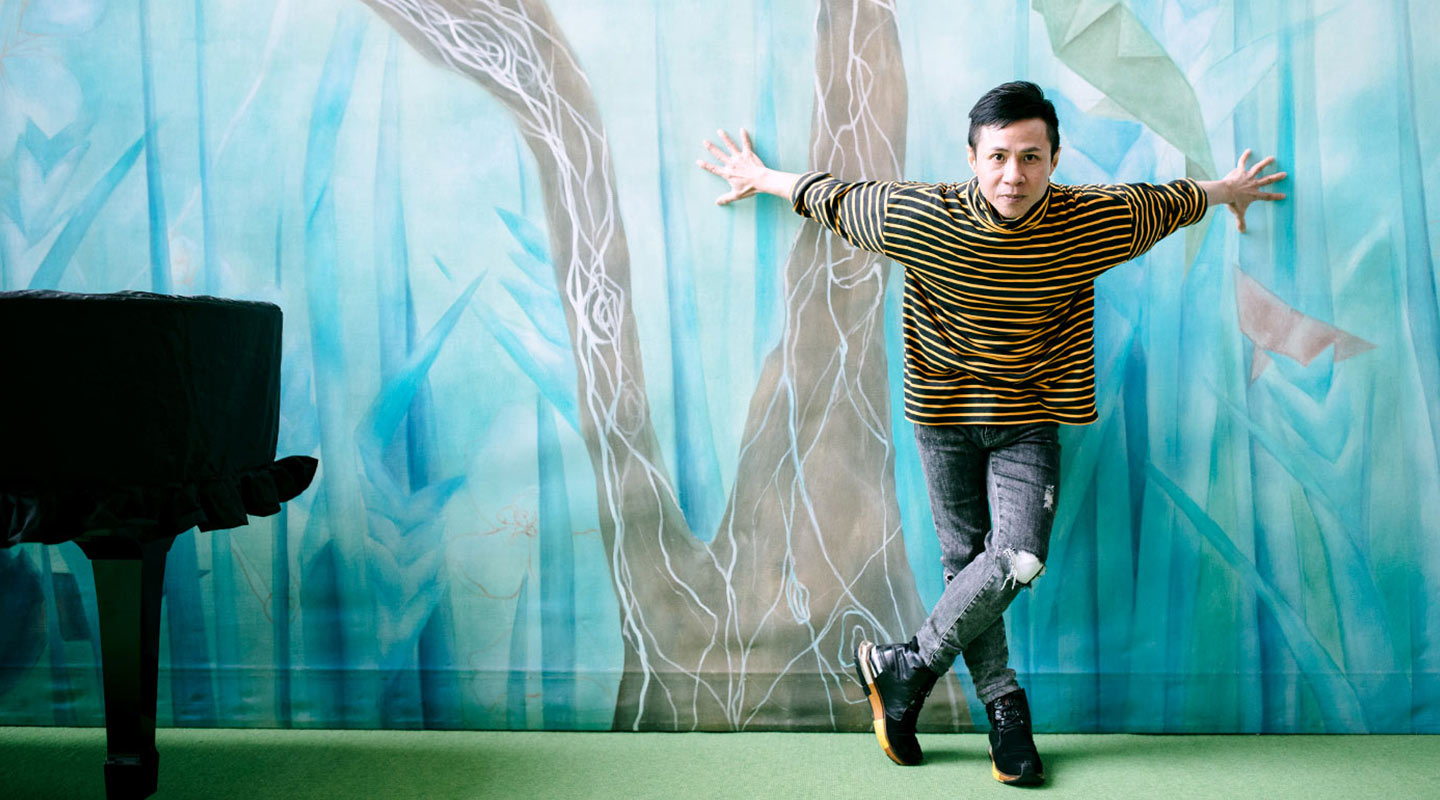Pushing the Boundaries in the Art of Dance
Daniel Yeung choreographs his own legend

As a choreographer, Daniel Yeung often tells others that he didn’t choose dance—dance chose him. Playful ever since childhood, he did not study hard but was good at drawing. In the late 1980s he got into CUHK, where he majored in fine arts and minored in music. Feeling lost after graduation in 1991, he drifted from job to job before joining the City Contemporary Dance Company (CCDC) through a friend’s referral. His administration work there marked the beginning of his exposure to contemporary dance.
While doing marketing for CCDC, Daniel was in regular contact with dancers and choreographers to discuss the hows and whys of dance creation in order to promote contemporary dance. Gradually he began to form his unique take on this dance form. ‘As I recalled the fine arts and music theories I had learnt, I came to realize the universality among different art forms. There shouldn’t be any line of demarcation between painting, music and dance. Dance can be interpreted as a form of action sculpture on stage. Similarly, performance art can also be regarded as an expression of visual arts transformed into a stage show,’ he said.
The epiphany spurred him on to try his hand at contemporary-dance choreography. His maiden attempts consisted of dance pieces lasting for just a few minutes. In 1995, however, the 40-minute solo performance Twin choreographed by him at Now Festival caused a sensation among the arts circles. Critics raved about Daniel who, without formal dance training, came out of nowhere to dazzle the crowds with his exceptional choreographic talents and one-of-a-kind style.

He soon went on to become the first-ever awardee—as a non-Hong Kong Academy for Performing Arts graduate—of a scholarship by the Hong Kong Jockey Club Music and Dance Fund to study choreography in the Netherlands. Upon his return to Hong Kong three years later, he established himself as a full-time professional dancer and choreographer. At the age of 31, he was considered by many to be a bit late in the game. But, for Daniel, the timing was just perfect. ‘Finding my bearings in dance in a roundabout way wasn’t a waste of time at all. All the experience I had gained along the way provided nourishment to my dance creations, paving the way for my artistic outbursts when the time came,’ he explained.
After his return to Hong Kong, his debut full-length dance work Dance Exhibitionist—A Paradise for Natural Body won him the Hong Kong Dance Award 2000, an accolade he was to receive five more times. In 2002, he was listed as ‘The Choreographer to Watch’ in the Ballettanz yearbook in Europe and in 2012, was honoured with an Award for Best Artist (Dance) by the Hong Kong Arts Development Council. Daniel said he was proud of these awards because they were presented as a mark of recognition of and appreciation for his achievements rather than as mere trophies for his victories in competitions.
Now that he has been able to make the most of his innate talent for dance, Daniel began to mull over the idea of doing something for his beloved Hong Kong. He has kept asking himself: ‘What kind of dance culture can represent Hong Kong to make it visible to the world?’ Then his childhood favourite, lion dance, came to mind. ‘Lion dance is a kind of dance per se, a fact often overlooked by many. Lion dance is a much broader concept than Western dance. Comprising martial arts, acrobatics, puppetry, feng shui and divination, it’s a gem of Cantonese culture.’ ContempoLion, an original dance composition by Daniel performed in the summer of 2017, amalgamates contemporary dance, live electronic music, Parkour and aerial arts, featuring a transparent lion head to give the audience a better look at the dancer’s moves. Daniel’s remodelling and reinterpretation gave this time-honoured folk custom a new avant-garde look.

To make Hong Kong visible to the world through dance, it is also important for local works to be given a chance to ‘go out’. With Daniel at the helm as director, the Hong Kong Dance Exchange Festival organized in early 2018 showcased eight selected works by Hong Kong choreographers and top-notch productions from four international dance festivals held in Japan, South Korea and Taiwan. The primary aim was to enhance audience appreciation of contemporary dance. But, more importantly, it was an opportunity to promote the works of a new generation of choreographers. ‘It’s a dance exchange platform. Each of the four participating dance festivals from overseas must choose one work by a Hong Kong choreographer to take home to perform. In the end, three of the four dance festivals each chose two. This goes to show that works by Hong Kong choreographers are beyond world-class. It’s a pity that there are few people to pitch them to the world,’ he added.
When asked for his advice for aspiring young artists, Daniel brought up the word ‘playful’ again. “I envy musicians who can say that they ‘play music’, but dancers can only say they ‘practise dancing’, which is so dull and boring. No matter what you do, if the fun element is gone, you will no longer find it attractive. To be able to come up with new ideas that take people by surprise, artists must always be playful at heart. Overemphasizing practicality and function will make you lose sight of the poetry of art. But what makes art attractive is its very poetry.”

Reported by Christine N., ISO
Photos by Eric Sin
This article was originally published on CUHK Homepage in Mar 2018.

